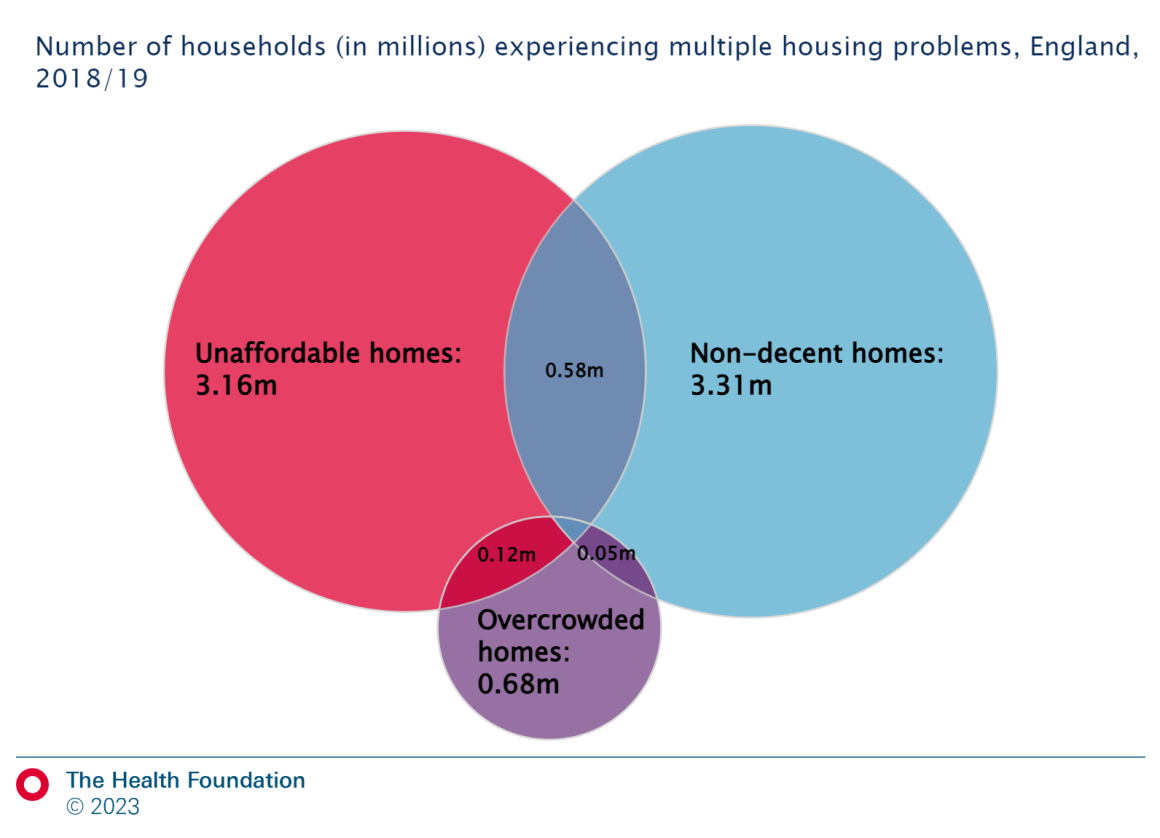Number of households experiencing multiple housing problems
27 April 2023

-
8.0 million households in England (34%) experience at least one problem with their housing, and around one million households experience multiple housing problems.
Problems with people’s homes – non-decent homes, overcrowding and unaffordable costs – can influence their health. Non-decent homes include problems such as damp and cold, which can directly harm health. Overcrowding and poor affordability can cause stress and influence mental health. Each of these problems can influence health separately. Experiencing more than one of these problems risks further harm to health.
This diagram shows the number of households experiencing one or more housing problems in England:
- In England, 8 million households experience at least one housing problem and 10% of these households (around 800,000) experience multiple housing problems.
- The most common combination of these problems is having to pay more than a third of the household’s income on housing for a non-decent home – 579,000 households were in this position in 2018/19, the most recent available data.
- There are 49,000 households living in non-decent and overcrowded homes, and 123,000 households living in overcrowded homes that are classed as unaffordable.
- A small number of households – around 60,000 – experience all three problems.
The chart shows that overcrowded housing is the least common of these problems in England, although people living in overcrowded households are most likely to experience multiple housing problems. A total of 34% of households living in overcrowded homes have at least one other problem, while 21% in non-decent homes and 24% in unaffordable homes experience additional issues.
A large number of households in England experience at least one housing problem, underlining the extent of the problem. Around one million households with more than one risk to their health could be prioritised for intervention. Overcrowded households are the most likely to experience additional housing problems.
- Non-decent homes are defined as those with a Category 1 hazard – as assessed by the Housing Health and Safety Rating System (HHSRS) – that are not in a reasonable state of repair, lack reasonably modern facilities or are not warm enough (do not provide a reasonable degree of thermal comfort).
- Overcrowding is measured by comparing household members against a bedroom standard. This standard allows for the number of rooms a household needs, based on the relationship status of adults in the household, and the age and sex of the children.
- Unaffordable housing is where more than a third (33%) of household income (net housing benefit) is spent on housing costs.
Source: Ministry of Housing, Communities & Local Government, English Housing Survey, Housing Stock Data 2019.








